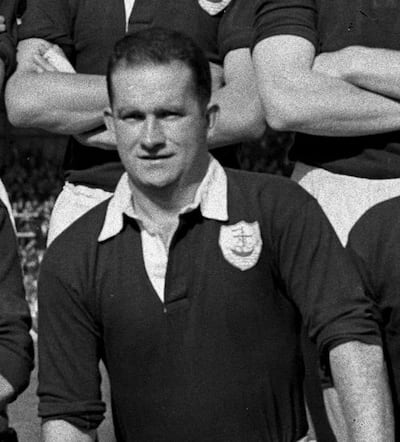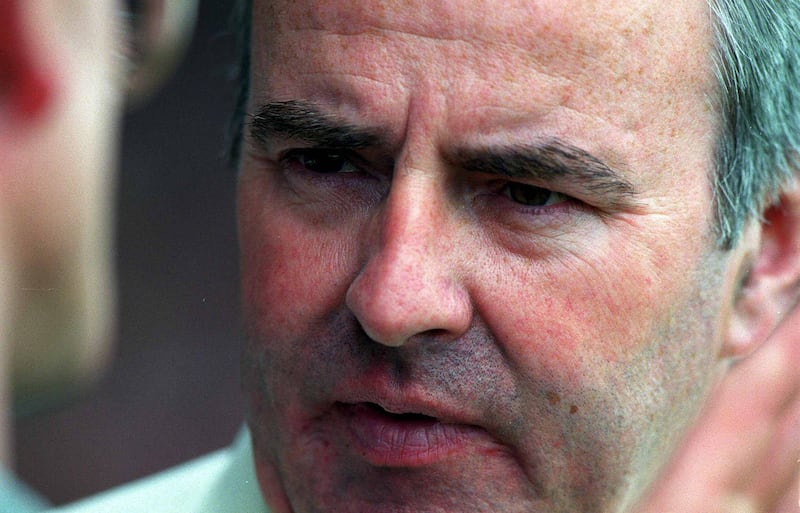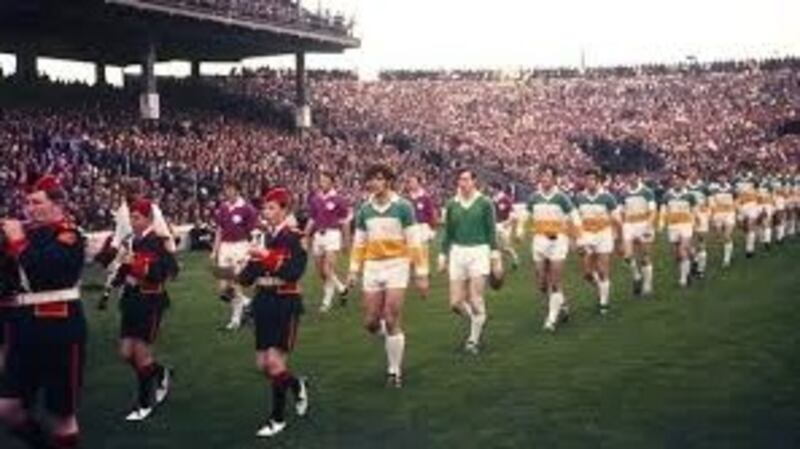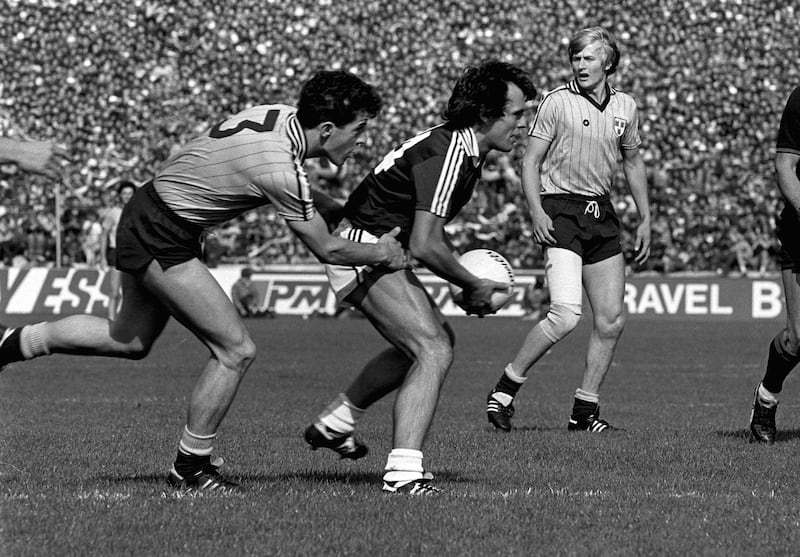A few days out from the All-Ireland football final, Jim Carney says that he’s finding the pace of the GAA calendar difficult. Even though his own county, Galway will take on Armagh for what could be a 10th title, he is trying to adjust.
“I’m not fully focused on this – still thinking of Tony Kelly,” he says of the Clare captain’s otherworldly display in last week’s hurling final.
Of course, he does manage to retrain his focus on to Galway football. It’s a subject close to the heart with his interest in history and sport and the encyclopedic breadth of his observations rattle through the decades.
If he has a go-to phrase, it is, “I’m a bit cynical about this . . .” when some suspiciously received view or rickety consensus pops up in conversation. It’s not that he’s cynical, though – and he’s not really a contrarian but more of a sceptic or iconoclast.
READ MORE
For football evolution in the county, its successes and failures, as well as beyond he has been a bit more arm’s length than participant but a bit more involved than merely an observer.
A sports reporter but with other journalistic and literary interests, he joined RTÉ in the 1970s and became the first presenter of The Sunday Game before the serious aftermath of a car crash forced a reset.

Life with the Tuam Herald included resuming broadcast work, serving as a Galway football selector with Tony Regan in the 1980s and only last year he published a book on the stars of Galway’s 1956 All-Ireland, Seán Purcell and Frank Stockwell – he really dislikes the joint sobriquet, the Terrible Twins and doesn’t use it in the book, which is an absorbing examination of their lives and occasionally difficult times.
There is further balking at his own reference to ‘deep in injury-time’.
“Is the ‘deep’ absolutely necessary? When I really retire, I’m founding a society for the abolition of adverbs!”
He has a depth of knowledge of nearly all the county’s prominent teams, their personnel and place in history, all expressed colourfully and amid detours thrown up as he converses, like someone chatting away while tossing plates in the air to shoot down.
Let’s start at the start. Galway’s first All-Ireland came in 1925 but was also the last such title to be decided in the committee room. Having researched this exhaustively, Carney approvingly quotes a contemporary headline: ‘Chicanery and skulduggery’.
“The Independent reporter who did great work at the time but wasn’t bylined went to Luke O’Toole, the first paid official of the GAA, and asked him, for the record – he was doing a round-up of the year – who were the All-Ireland football champions for 1925.
“O’Toole declined to answer the question – no comment! I discovered another nugget of information. The late archivist Michael O’Donohoe showed me some very old records – from 70 or so years ago – and in a couple of lists of All-Ireland winners, when they came to 1925, one simply said ‘void’.
“In another, the winners for each year were placed in brackets, like 1923 (Dublin). For 1925, there were empty brackets!”
He has suggested that his own county should hand the All-Ireland back to Mayo, who had originally been awarded it earlier that year.
[ Mayo's greatest football grievance actually goes back 95 yearsOpens in new window ]

Galway are the third county on football’s roll of honour but with Dublin and Kerry in the 30s, nine titles can more accurately be described as leader of the chasing pack.
“Nine All-Irelands – eight on the field of play – is a thin enough return for 100 years as contenders.” he says.
That view of Galway as a kind of permanent establishment team is not far-fetched. Of the 13 decades since the turn of the 20th century, in only one – the most recent 2010s – has the county failed to reach an All-Ireland final.
Looking at it through the prism of one family, Carney reflects on the misery for his county of their frequent losses on the big day – most graphically the three years at the start of the 1940s when they were beaten in two finals by Kerry. Then, having defeated their tormentors in the 1942 semi-final, they lost out to Dublin by two points.
“There was the wrong sort of three-in-a-row in the 1940s. That was heartbreaking for the players concerned. I remember talking to some of them in old age. Joe Duggan and his son Jimmy are very interesting people in the history of Galway football. Joe was a giant of a man and played in all three [defeats]. He was also an outstanding athlete, a national-level discus thrower.
I think the whole thing about the Galway style is a myth, something handy that was said a long time ago. Certainly, we have played with abandon in All-Ireland finals and they were the ones we lost
“Jimmy comes along in 1966, does the Leaving Cert and, about three weeks later, he set up the winning point that Liam Sammon punched over the bar to beat Mayo in the Connacht final. He did well in the All-Ireland final at 18 years of age but he goes on to lose three more in 1971, ‘73 and ‘74, so the Duggan family played in seven All-Irelands and won one.”
The team of the 1970s almost equalled their predecessors of 30 years previously but instead lost three All-Irelands in four years to different counties, Offaly, Cork and Dublin.
The 50th anniversary of the third final falls in September. For all their trauma, Jim Carney retains a fondness for that group, a generation following in the footsteps of the three-in-a-row winning side but not quite getting there.
“I had great time for that 1970s team. There was just something about them. They were great personalities.”
This weekend Galway are back in the final two years after losing narrowly to Kerry and the slightest of favourites going into Sunday against an Armagh team with whom they have tussled remorselessly in the recent past.

Manager Pádraic Joyce took the job in 2020 vowing to play more attacking football and targeting an All-Ireland. Bitter experience modified the approach and Galway have built the best defence in the game but are still associated with attacking football perhaps because of the manager’s brilliant career, including 1-2 and 0-10 in All-Ireland-winning finals and perhaps because of the team’s box-office full-forward line of Finnerty, Comer and Walsh.
Carney doesn’t really hold with the idea of the county’s creative, attacking DNA.
“I think the whole thing about the Galway style is a myth, something handy that was said a long time ago. Certainly, we have played with abandon in All-Ireland finals and they were the ones we lost.
“Going back to 1956 and the three-in-a-row, which I remember well, they were very well-drilled teams. There was method in everything they did. They weren’t just throwing the ball around. What does Galway style mean?
“The 1960s teams [style] might have looked random – that they were kicking the ball anywhere but that wasn’t true.
“Noel Tierney from my own club, Milltown, was a great fielder of the high ball. He was just 5ft 10ins but people used to think he was 6ft 4ins, he was so good at getting off the ground. They would drop-kick the ball but generally with a purpose and they’d find their men too.
“Forwards were efficient. John Keenan was a great kicker – ‘the red-haired John Keenan at left full forward . . .’ or ‘flame haired’, as Michael O’Hehir used to call him. Séamus Leydon had speed. But there was nothing flashy or ‘strictly come dancing’ about it.”

For him, video kills more than radio stars.
“I think television has a lot to do with it. You can actually see old games. I watched newsreel footage of the 1938 All-Ireland final, which has epic status, particularly the drawn game – and we beat Kerry as well.
“The backs were all just pulling on the ball on the ground. So, as exciting and thrilling as all those matches were at the time, they were of their time. Video is not kind to them. Their grandchildren are likely to be saying, ‘Jeez, I saw you there the other day, Grandad – what were you doing pulling on the ball? You didn’t pick it up at all.”
There are influences he believes helped to shape Galway football over the years. A fateful decision about 100 years ago to relocate Irish-speaking battalions from Dublin to Galway brought on stream recruits from Dublin, Clare, Cork and Kerry, all living in the city.
“Joe Young, from Donnycarney, Jack Kissane, Listowel and Billy O’Neill from Cork. Dan Kavanagh, an important figure in Kerry. He was from Dún Chaoin – you know, next parish Nantucket or wherever.”
The same applied to students at then UCG and gardaí stationed in the county. Carney rattles through the names of players, who contributed to various All-Ireland wins, explaining why they were available for Galway.
“A man in Kerry told me once that the reason they played for Galway was that they couldn’t afford cars so, short of walking all the way to Killarney, they weren’t able to play for Kerry.”
Another source has been St Jarlath’s College in Tuam. In the early 1960s, Fr Brendan Kavanagh arrived and his innovative coaching landed three Hogan Cups (schools All-Ireland) in four years. Tull Dunne, the Ayatollah of Galway football, asked Fr Kavanagh to train the Galway minors, who won the 1960 All-Ireland.
“The Jarlath’s style of play under him became known as ‘combination football,’” according to Carney. “The 1960 champions were the best minor team I ever saw. It was carried on in later times by Fr Oliver Hughes and Joe Long, the 1994-winning coach and first lay person to guide St Jarlath’s to Hogan Cup glory.”
Ten of Sunday’s Galway panel came through St Jarlath’s and three members of the 1994 team are on the line for the county: Joyce, coach John Divilly and John Concannon.
Jim Carney believes that the strongest influence on the perception of Galway football as a free flowing, creative construct is the 1998 team and the primacy of its forwards, featuring Joyce, Michael Donnellan and Jarlath Fallon.

“In John O’Mahony’s time – he was such a trainer as well as a man manager and he never did anything without a purpose. I think a lot of it comes from ‘98 because that was so warmly greeted. í
“It almost put 2001 in the shade. Ninety-eight was a different thing altogether and you saw that after John’s death.”
That untimely death has created a sense of mission for the team, prompted by the involvement of Joyce and coach, John Divilly, in those All-Ireland-winning teams of 20-plus years ago. Before the semi-final, the players lined up in formation to honour the former manager.
“We actually met in the revolving door of the Galway clinic and had a nice chat,” says Carney of one of his last contacts with John O’Mahony.
“Johnno developed a great love of Galway. I remember when county chair Frank Burke’s father-in-law died and Johnno couldn’t travel, he rang me and asked if I could tell his wife Ger the best way to go.
“Tom Crean and Shackleton wouldn’t have found it but she made her way there. He had a great grá for Galway.”
On Sunday, the county is on the verge of a further chapter in the Galway football story – another episode in history for Jim Carney to analyse and categorise and another chance for Sam Maguire to feel the Atlantic spray.
- Sign up for push alerts and have the best news, analysis and comment delivered directly to your phone
- Join The Irish Times on WhatsApp and stay up to date
- Listen to our Inside Politics podcast for the best political chat and analysis















